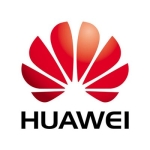What is our primary use case?
We use it as the backbone for all our VM and Hyper-V infrastructure. We also use it as file servers for external users, so we have a couple of users who are connected to it for file server purposes. We have everything connected to it, e.g., we have a repository from Rubrik down to AFF.
We have our own customers for whom we have deployed the solution. For our hosting options, we use NetApp as well. Since we are selling hosted services and have customers connecting into our environment, the solution has definitely helped a lot from that standpoint.
How has it helped my organization?
When it comes to backups, it has given us quick options when restoring things for customers, using the ability to mirror Snapshots onto another cluster, having managed status, and using previous versions in Microsoft. It gives the customer the possibility to restore their items too. Backup size, in general, gets much smaller since it is based on mirroring a Snapshot rather than being repetitive.
It impacts customer retention because of its overall ease. When you are running a business, where time is a factor, that is the biggest selling point. Things happen really rapidly, when they happen, and being able to say, "Yeah, we can get this up and running in a day, if you want," or even less time in some cases. Sometimes, that can be what makes or breaks our case.
AFF has helped to simplify our infrastructure, while still getting very high performance for our business-critical applications. Having all these things working well on one solution is really good. We run this as the backbone for both Hyper-V and VMware as well as an archive location for Rubrik. So, it is great having one solution that can do it all.
It does what it is supposed to do for SAP and Oracle. Because of the ease of it all, you have a highly tunable, high performance storage system that alleviates a lot of problems. With its ease of management, you can quickly get your work done and go onto the next thing on your list.
We mostly use AFF to support when we mirror data onto a FAS solution to immediately spin-off a new environment, e.g., if something happened to the prior data.
What is most valuable?
NetApp Snapshots are one of its best features.
Its multi-tenant purpose: You can have one method for many customers with no interaction to one another.
The simplicity of making it work correctly is the most loved feature of it all.
AFF definitely helps simplify data management with unified data services across NAS environments.
The ONTAP system, when you know how it works, is really simple and intuitive.
What needs improvement?
I don't like the newest GUI. It needs more options. Some features have been removed. Oversight is not as good in the new GUI compared to the previous version. Though, it might be something that we just need to get used to.
For how long have I used the solution?
As a company, we have been using AFF for around six to seven years.
What do I think about the stability of the solution?
It is as stable as it can be. I would give the solution A+ for stability.
Throughout my career, I have only once had to deal with an instability issue, but it has nothing to do with NetApp as a solution or system.
What do I think about the scalability of the solution?
The scalability is great and super easy. We are able to just connect, go through the UI, and select to expand the cluster. It is super easy even if you want to scale it out by having a Mirror setup, not a cluster, or pairing them together. By being able to do this with just a couple of clicks of a mouse button, it is superb.
We have thousands of customers, but there is not much to do for daily operations because it just runs. We have alerts setup in it, but we seldom have to do anything.
How are customer service and support?
The technical support has just been great. They have been fast and think out-of-the-box. They have helped us with issues that affect NetApp, but where NetApp is not the root cause of the problem.
I would rate NetApp's technical support between nine and nine and a half (out of 10). I have worked with other companies, and in comparison, I would easily give these other tech supports a rating of four or below (out of 10).
How would you rate customer service and support?
Which solution did I use previously and why did I switch?
I have worked with IBM Storwize. In no way are these solutions similar. Most people who are buying and operating with AFF are buying a fully functional storage system. You are getting way more than just allowing someone a terabyte here or there, such as performance metrics, quotes, and service options. Because of this, I would not say that I have not worked with a competing product.
How was the initial setup?
One of the biggest impacts that this solution has had is on time to deployment. It takes a lot less time to set up a new infrastructure for a company. Our hosting setup went from being a couple of days to a couple of hours.
The initial setup depends on the goggles that you have on. If you are an experienced technician, then it is relatively simple. However, for a customer who just bought it and wants to set it up themselves, then it might be a little bit hard to figure out.
My implementation strategy is always that when we sell systems that we do the implementation ourselves. This is so the customer gets a fresh, good experience with a fully updated system rather than a controller that has older systems. We rely highly on the customer's satisfaction, e.g., they see the project for what it is instead of what it could be.
On average, the deployment takes roughly one day, and that is running through everything. It takes one day to get it up and running, setting up the first SVMs, ensuring all the connectivity, etc. In most cases, the greatest hindrance in the entire setup is the network setup, which does not have anything to do with NetApp.
What about the implementation team?
We go through it with the customer. We first figure out why the customer wants it and what they will get out of it, rather than out of their previous existing system. From there, we set it up with the customer. We address all the issues that they have been working on so they see profit for the solution rather than it just being a storage system that might alleviate the problems that they have had.
Normally, we only have two people who deploy it. Every time we are about to deploy, we always have someone for the NetApp setup and a network engineer working with us to set up the network.
What was our ROI?
I need to spend very little time monitoring it, and that helps with employee costs.
It is easy to take Snapshots, making them easily available for our customers and staff to be able to restore. As there are costs associated with helping the customer, because it's included in a contract, this brings in return on the investment because you can have it as an extra fee within a contract, even if you don't have to help out that much with it.
It really speeds up delivery time.
AFF has helped to reduce support issues, such as performance tuning and troubleshooting. When you have access to more tools, like Cloud Insights and OCI, that is definitely a factor. You are able to get an overview with OnCommand Insight (OCI) when you have an infrastructure with many customers, e.g., in our case, we have somewhere around 1000 customers ranging from small to big businesses. It connects items together, which helps with troubleshooting latency and unexpected performance issues. You can get them fixed significantly faster than you can in many other cases. For example, if you are running into problems with solutions that are made for running a simple VM against a machine that has a way to store space running across many disks, then it can take way longer time to figure out performance issues than with NetApp, where you are getting way more oversight of who is doing what.
What's my experience with pricing, setup cost, and licensing?
The licensing and pricing are fine. As a reseller for the product, we need to make the differentiation in the minds of the customer. They are not just buying some tool that does only one thing, e.g., showing a LAN for a customer. The pricing is fair for what it is.
If you need more options, then there will be more costs involved with the license, but that is not irregular.
Which other solutions did I evaluate?
I have worked with Nutanix as well. I would recommend either solution for a client based on what fits them rather than trying to make a solution stretch across.
What other advice do I have?
Get yourself acquainted with the product and see what it can do. Many people may run into the issue of thinking that it can do way less than it can actually do.
We do not use their cloud backup services at the moment, because there hasn't been a strong enough business case. I would not call it priority, but we are definitely highly aware of the cloud backup services if an opportunity or business case arrives.
We don't work that much with SAN. Basically, we mostly use the solution for its NAS functionality. We do not have that many SAN cases.
Since our StorageGRID is really new, we haven't gotten the full effect of it yet. The native integration, where we can seamlessly move onto another media, is great. It is very intuitive and easy to work with.
Biggest lesson learnt: Keep it simple.
I would easily rate it as 10 out of 10, because it works like a charm. When you have a problem, it does exactly what it is supposed to do, with little to no effort.
Which deployment model are you using for this solution?
On-premises
Disclosure: PeerSpot contacted the reviewer to collect the review and to validate authenticity. The reviewer was referred by the vendor, but the review is not subject to editing or approval by the vendor. The reviewer's company has a business relationship with this vendor other than being a customer: Partner











